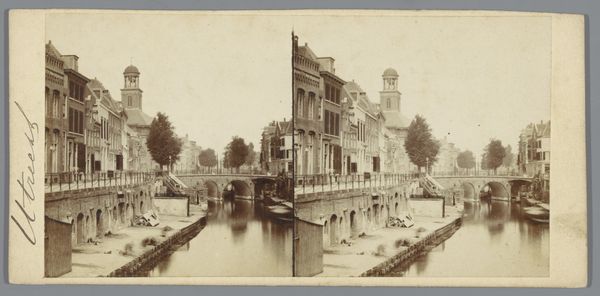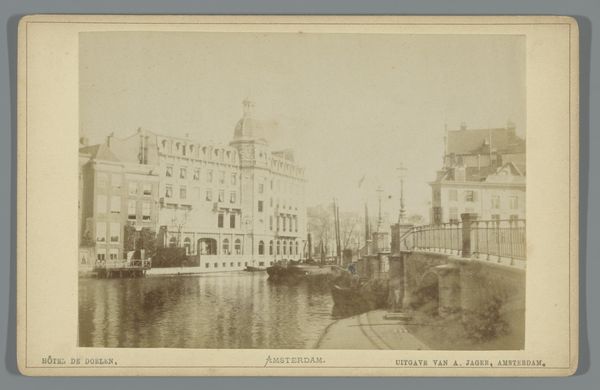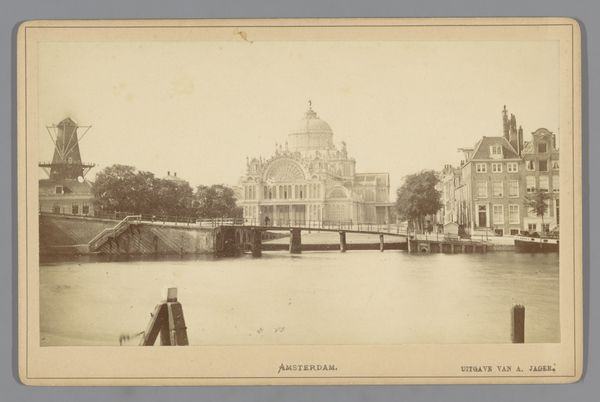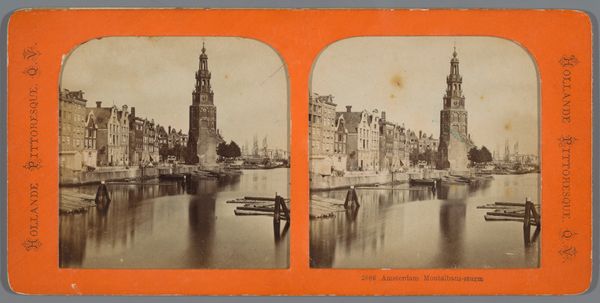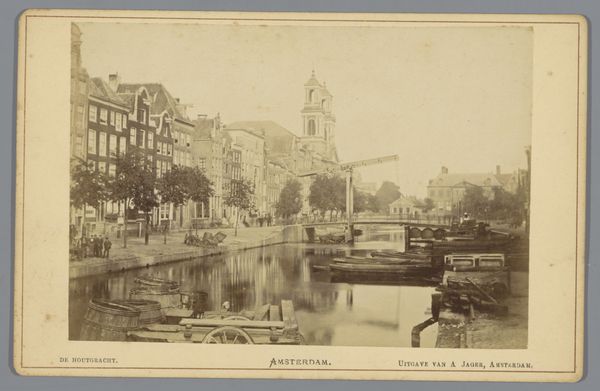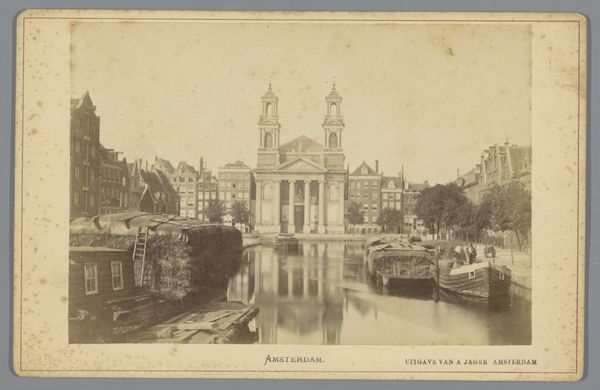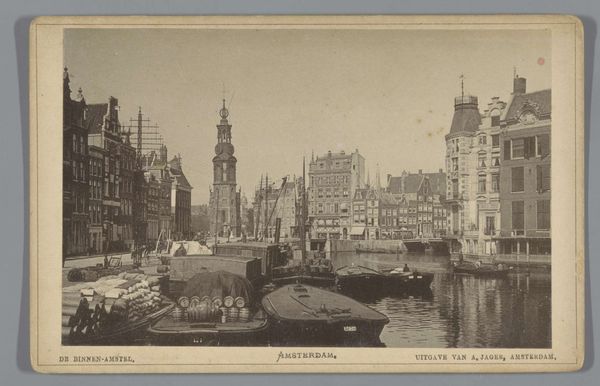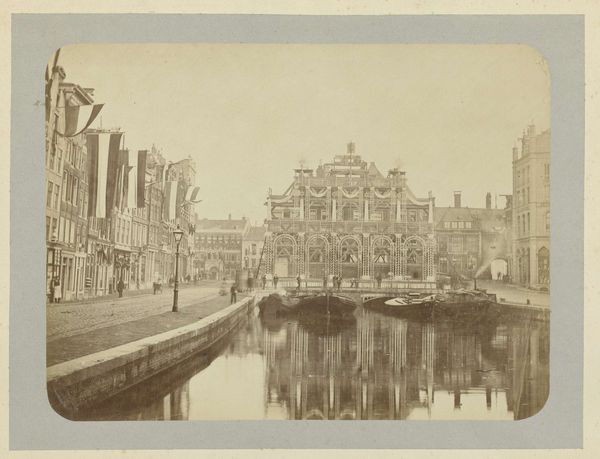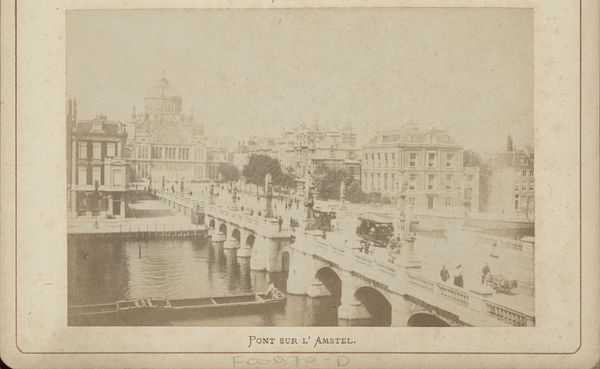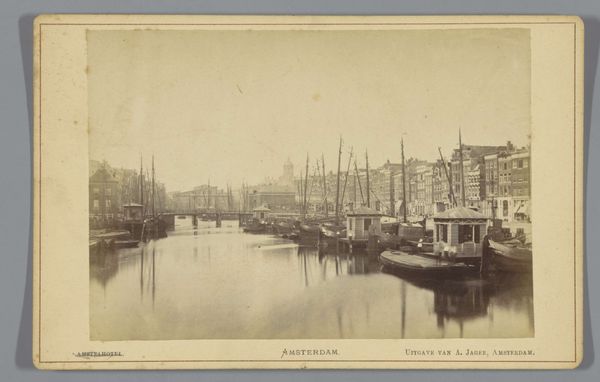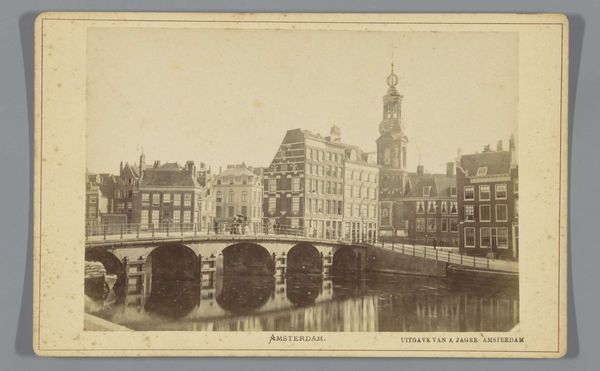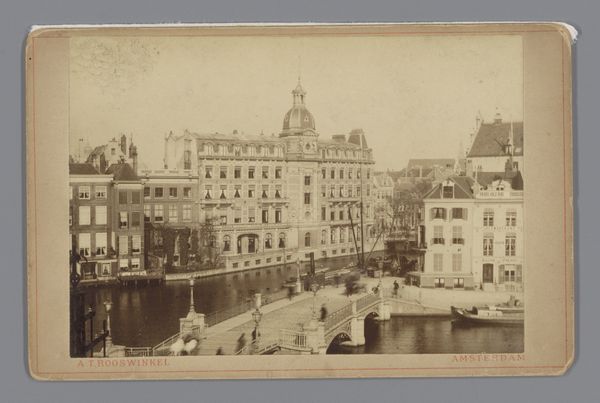
Gezicht op een brug over de Amstel tussen de beide Amstelstraten in Amsterdam 1860 - 1890
anonymous
Rijksmuseum
photography, albumen-print
landscape
photography
19th century
cityscape
albumen-print
Dimensions: height 108 mm, width 168 mm
Copyright: Rijks Museum: Open Domain
Curator: This albumen print, dating from sometime between 1860 and 1890, offers us "Gezicht op een brug over de Amstel tussen de beide Amstelstraten in Amsterdam"—A view of a bridge over the Amstel, captured by an anonymous photographer and preserved in the Rijksmuseum collection. Editor: It has a muted serenity, doesn't it? The sepia tones soften the architectural details, making the water a still mirror reflecting the soul of the city. The reflections in the water remind me of older memento mori, though subtly. Curator: Precisely. Photography at this time was transforming the way urban environments were perceived and documented. Prints like these became ways of controlling how the populace at large came to understand what cities really looked like. And, as you rightly hint, the quiet composition here served a need for the comfort of tradition in the face of that rapid industrial and urban transformation. Editor: Notice how the bridges themselves form visual links – horizontal bands tying together disparate structures along the waterfront? It's such an artful construction of depth with that series of spans receding back into the distance. Those repetitions carry the viewer's eye right to the skyline where church spires puncture the air above, symbolizing the intersection of the everyday and the divine. Curator: That bridge also acted as a vital thoroughfare; it shows how Amsterdam managed its infrastructure. It literally bridged communities. The perspective is carefully managed to celebrate civic achievement and create a controlled picture of urban orderliness at a time when the city, like so many, had its problems. The symmetry inherent in that building helps cement ideas of national pride and mercantile success in a global economy. Editor: Though the people themselves are barely visible! What stories those anonymous figures could tell! Those architectural symmetries, they don't represent the full social picture, do they? There were plenty of tensions under the surface of the canal, that symmetry just masks some of the turmoil underneath! Curator: A tension typical of how official narratives always elide certain facets of a more complex reality! In this visual record, it is less a true mirror than a subtly fashioned reflection aimed to solidify confidence. Editor: Indeed, we both came looking at it expecting one thing and discovered another facet revealed in that visual language. Curator: Exactly. It invites one to pause, to look closer—perhaps a touch longer than was initially intended by the artist who, in fact, leaves an invitation for just such prolonged looking.
Comments
No comments
Be the first to comment and join the conversation on the ultimate creative platform.
